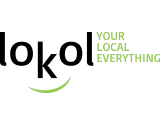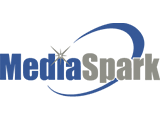Making sure infants with weaker immune systems are happy, healthy and well-fed is the core of an innovative new University of Saskatchewan (USask) research study.
The USask-led project is exploring both the accessibility and feasibility of using donor breast milk to supplement the feeding of babies born to a mother with HIV, or “HIV-exposed infants.”
Chloe Langen, a Master of Science student in the College of Pharmacy and Nutrition, is helping to co-ordinate the project that will provide pasteurized human donor breast milk to HIV-exposed infants.
The hope of the project is to determine the efficacy of not only regularly supplying donor breast milk for HIV-exposed infants, but also the logistics of getting caregivers the donor milk.
“Breast milk is specifically designed for infants at every stage of development,” Langen said. “We know that it would be beneficial to HIV-exposed infants, but we want to make sure it’s something caregivers want.”
Langen is working under the supervision of Dr. Kelsey Cochrane (PhD), an assistant professor in the College of Pharmacy and Nutrition. The research is supported by the Saskatchewan Health Research Foundation (SHRF), and the team recently received a SHRF 2024 Excellence Award for the project.
HIV rates in Saskatchewan are among the highest in Canada – three times the national average according to a study from the Public Health Agency of Canada published in 2024. Thanks to new antiretroviral therapies provided to pregnant women and new mothers with HIV, it can be safe for a mother to breastfeed an HIV-exposed infant.
Langen said those babies still have weakened immune systems even if they are not themselves HIV-positive. And while viral load in new mothers can be greatly reduced through antiviral therapies, there is still a small chance that breastfeeding can still pass on HIV to the infant. The Canadian Pediatric Society suggests that using formula is the safer option for mothers with HIV.
However, Langen called breast milk the nutritional “gold standard” for feeding infants because of the numerous immunological and bioactive compounds it contains that can’t be perfectly replaced by formula. For infants with weakened immune systems, having all those nutritional advantages is all the more important.
“I think it’s something that will benefit both caregivers and infants in the future. To be a small part of this larger study is incredible.”
“There is no risk of transmission (of HIV) if a mother strictly uses formula. However, there are so many studies that show reduced risk of infections by providing human milk,” she said. “The breast milk just helps to build that gut microbiome.”
Langen also said mixed feeding – using both formula and breastfeeding – is not a viable option for HIV-exposed infants. She said formula tends to be harder to digest and can make the gut more permeable by creating micro-abrasions. If a caregiver switched from formula back to breast milk, the now more permeable gut would be more susceptible to infection – and potential transmission of HIV.
“If donor milk is a ‘top-up’ to breastfeeding, it will allow them to continue breastfeeding,” Langen said. “If [the mother has] a low milk supply or if they’re away from their infant or just can’t provide breast milk ... this could expand feeding options.”
The pilot study for this research project will follow between 10 and 20 caregivers over the course of six to eight weeks. The research team will provide pasteurized donor human milk four times over that span to supplement the infant’s feedings.
Langen said the project will evaluate the frequency and volume of donor milk feedings, evaluate caregiver experiences and any instances of poor tolerance in the infants, like gas or vomiting, and examine infant growth trends.
While donor milk is used within the neonatal intensive care unit, it is both difficult to access and very expensive to obtain for caregivers outside of the hospital setting. Langen said the hope for this project is to fill a gap in recommended, nutritional feeding alternatives for HIV-exposed infants to help them be as healthy and well-fed as possible.
“I think it’s something that will benefit both caregivers and infants in the future,” she said. “To be a small part of this larger study is incredible.”
Together, we will undertake the research the world needs. We invite you to join by supporting critical research at USask.





0
Log In or Sign Up to add a comment.- 1
arrow-eseek-eNo items to display